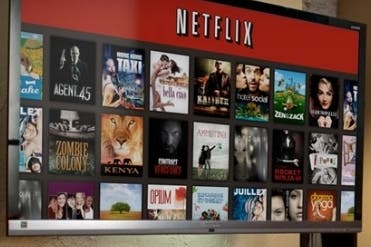Face-Off: Netflix vs. Lovefilm
Everything you need to know about movie and TV streaming services - and the best console hardware for the task.
Update: As of May 1, Amazon is now in the process of rolling out an HD update for the PlayStation 3 LoveFilm client, which should put an end to the 576p disappointment described in this article.
Did anyone ever see this coming? According to reports, the Xbox 360 is now used more for streaming movies and TV shows than it is for playing games, with Netflix alone accounting for 24.71 per cent of the total internet traffic in the USA. The platform holders' dreams of their consoles being the centre of the living room, deliving a range of entertainment, have finally come to pass. Streaming media has surpassed the traditional disc-based alternatives and it is convenience, not quality, that is now the driving force behind media consumption, with the latest films, TV shows and songs only a few clicks away.
In the UK, there are two high-profile streaming video providers battling it out for subscription supremacy: Lovefilm and Netflix. Both claim to offer unlimited access to thousands of films and TV shows for just a small monthly fee. The question is, which of these two services offers the better audio-visual experience? Has HD streaming quality matured to the point where it can replace Blu-ray as the medium of choice for most movie and TV fans? In addition to that, what is the preferred console platform for those looking to get the best out of these streaming video providers - Xbox 360, PlayStation 3 or Wii U?
Let's start by assessing the quality of the playback apps available to each console. The user interfaces for both services are customised for each platform to a certain degree, with the 360 getting more in the way of bespoke menus. Lovefilm in particular adopts Microsoft's own metro interface for closer integration with the 360's front end, sharing a similar tile-based system that operates in the same way. The menus on the PS3 and Wii U are slightly different, with the main categories listed at the top of the screen on Nintendo's console, but otherwise they are nicely laid out and work in a similar manner.
Both services allow you to pause, fast-forward and rewind during playback, but in this respect Netflix is more user-friendly: screen caps are provided in ten-second intervals for the video stream, allowing you to find a specific scene with ease. In comparison, Lovefilm has the same basic options but the lack of any preview images means relying on timestamps to find your way around. Regardless of platform, browsing and searching is much faster on Netflix with Lovefilm menus slow to respond.
In terms of client functionality, Wii U owners get some mild touch-screen features using the GamePad: searching is more intuitive here, with the results nicely displayed on your HDTV. Another cool aspect of the tablet on both services is the ability to view videos on the GamePad's display with just a quick tap of the screen. Image quality is rather good too: videos look softer due to the reduction in resolution, but compression artifacts are much harder to spot. You can also take advantage of the in-built speakers of the GamePad for playback without an HDTV, or alternatively hook up a pair of headphones if you want higher-quality sound and stereo separation. It's not up there with the iPad experience, but it's a cool bonus feature nonetheless. Another Wii U advantage is power consumption, or rather the lack of it - the console sips less than half the juice performing the same tasks as both the Xbox 360 and PS3.
Netflix vs. Lovefilm: the battle for content
In terms of new movies and TV shows, both Netflix and Lovefilm are considerably behind traditional services like Sky and Virgin, but at the same time they do have a wide range of catalogue content on offer. Netflix appears to lead the way with a better selection of popular TV series, with multiple seasons of the likes of Breaking Bad, Dexter and Jericho - also joined by House of Cards, a US political drama series created exclusively for the service with an all-star cast and superb production values. Both services offer up the staples like Lost, 24, Sons of Anarchy and Prison Break, while Lovefilm gets 30 Rock, The Shield and the phenomenal Rome as key exclusives.
The situation with movies is less clear-cut. Lovefilm seems to have a bigger selection of more recent titles and there are also more "triple-A" titles in the back catalogue, but one of the key differences is that the same movies are not always available on both services. For example, right now, Netflix has Iron Man 2, Hunger Games and Shutter Island as some of its most notable blockbusters, while Lovefilm features alternatives like Unknown, Black Swan, Twilight: Breaking Dawn and Source Code instead. It's a constant battle for exclusives which could keep users switching between the two services.
That said, the selection of more recent movies isn't particularly amazing on either provider, owing to competing content deals with the likes of Sky and other large media outlets. Most films available are a couple of years old at least, and newer titles often debut months, if not years, later on Netflix and Lovefilm - if ever. The option of actually hiring out physical discs gives Lovefilm a distinct advantage over Netflix in this regard, although it comes at the expense of convenience - you have access to all the latest releases, but have to wait around for a few days for them to arrive in the post.
Overall, both are great if you want to catch up on older films and shows that you might have missed out on, with Netflix having the edge in terms of TV content. However, those wanting the newest releases and key blockbuster hits - like The Avengers, Skyfall or The Dark Knight Rises - have to consider a traditional subscription-based service, or go with renting out discs via Lovefilm. This is perhaps less of an issue with TV shows, but when it comes to movies, both are limited with regards to content that is available for streaming. In a world where subscription services like Sky are so expensive, expectations need to be managed about how far your £5/£6 streaming service will take you in terms of access to more recent content.
The bottom line: both services are great for watching catalogue movies, with Lovefilm enjoying an edge in more recent content. In terms of TV shows, Netflix has a better overall range and is starting to generate its own content, but Lovefilm has a few key exclusives. The outlook changes enormously in Netflix's favour if you access the international catalogue via "backdoor" means - at that point Netflix dominates completely.
Image quality face-off
Interestingly, picture quality varies from both providers. Across a range of content, compression appears to be better handled on Netflix with 720p material - it appears both cleaner and sharper, taking advantage of the additional bandwidth available.
On 1080p content Lovefilm has the edge, with more accurate gamma and better colour accuracy that is closer to the studio master. Lovefilm sticks closer to the presentation of the Blu-ray encodes, while Netflix appears much brighter, changing the look of skin tones in the process - they appear less saturated and more washed out, and the overall image lacks depth at times. There's a real sense that Lovefilm offers up the closest vision to what the director intended in this regard and, on top of that, compression artifacts are also slightly diminished, hinting that the extra bandwidth allotted for full HD streams is being put to use - at the cost of a higher barrier to entry in terms of your internet connection.








Bar the gamma issue, quality looks to be very similar across PS3, 360 and Wii U when it comes to Netflix playback - as you might expect assuming the same encoded video is being delivered. The big difference here is that the Wii U's limited-range RGB output washes out images on displays that don't feature an adjustable black-level configuration option. However, Netflix always looks a little washed out on Wii U, even after making alterations to black levels on our HDTV.
While resolution is capped to 720p on the Xbox 360, the difference in quality isn't massive due to the compressed nature of the 1080p video streams - images appear a tad softer (particularly around text and finer details), but the console upscales the content well to full HD, showing that compressed 720p material still holds up quite nicely. You can still play Super HD (1080p) streams on the Microsoft console - you get the advantages of super-sampling the image along with the extra detail inherent in the higher-bandwidth encodes - but obviously playing this material at the native full HD is preferable.
Lovefilm delivers 1080p video on Wii U and PC, while also topping out at 720p on the 360 (though, again, we believe that downscaled 1080p encodes are being processed). In fairness, just like Netflix, video quality isn't very far behind on the 360 compared to the other platforms with differences more apparent on larger-screen HDTVs. On the other hand, PS3 owners running Lovefilm are left with just 576p standard-def playback - a massive deal-breaker for owners of the Sony console. In slow-moving scenes the low-quality compression isn't much of an issue, especially if the video is run through a decent HDTV scaler. Frenetic moments and action scenes with fast camera pans look truly awful though, with plenty of macroblocking, noise and general compression artifacting. Due to the service being capped at 3mbps, quality is often a lot worse than DVD - an uncomfortable state of affairs that puts Lovefilm at a substantial competitive disadvantage.








Strangely, overall video quality on both services is often worse on the Wii U to a varying degree, despite the system featuring higher-resolution playback than Xbox 360. The level of compression and peak picture quality is basically a match for the best of the competing platforms, but the level of quality fluctuates regularly during playback, only settling down after several minutes. The fact that we saw the same issue on both services rang alarm bells, so we set about finding out what the problem can be. To ensure we were looking at the platforms at their best, we used wired internet connections, using the official USB to LAN adaptor on Wii U. It turns out that this was a mistake - removing the adaptor and going for Wi-Fi completely resolved the issue.
With the playing field level, we can confirm it's Netflix that buffers up more readily, getting you to the optimal picture quality level more quickly. Obviously, the speed and stability of your internet connection also determines how well both services perform here - in our tests we tried to replicate conditions as much as possible.
The bottom line: Lovefilm is a deal-breaking standard-def on PS3, but offers HD playback on 360 and Wii U, while Netflix boasts HD across all platforms. Encoding quality is generally better on Netflix, but Lovefilm's presentation more accurately represents the Blu-ray standard in terms of gamma and colour balance. Xbox 360 is artificially limited to 720p playback by Microsoft, but you get improved quality by running the 1080p encodes in the lower resolution. In theory Wii U should be the best playback platform as it's the only one to offer 1080p native output on both services, but make sure your HDTV supports limited-range RGB.
Streaming vs. Blu-ray
All things being equal, our impression is that when things are running smoothly the top-end streaming experience is really rather good. The question is, how close does video over IP come to matching the impeccable quality found on expertly mastered Blu-ray discs? In truth, while both services offer up crisp and clear 1080p video (with 5.1 surround in the case of Netflix), there is still a gulf in quality - and die-hard AV enthusiasts are unlikely to be dissuaded from continuing to enjoy the no-compromise disc-based experience.


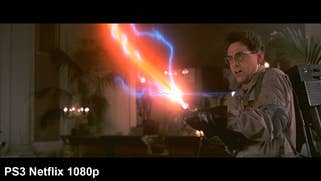


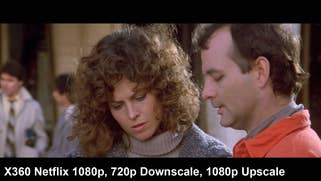

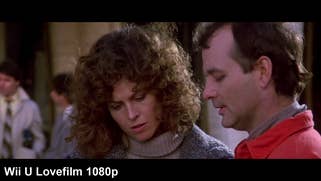
In terms of streaming video quality, the high-resolution nature of the material and the use of decent bit-rates allows for sharp imagery that can both match and even exceed that of low-pass filtered HD broadcasts. However, images lack the same level of fine detail found on well-mastered Blu-ray discs. In particular, while we see key facial features reasonably defined in many films, the grain structure is often reduced, smoothing over the look of the overall image, while intricate high-frequency information is completely lost. Meanwhile, basic 720p streams on both services simply cannot compete: images are significantly softer, and although they still qualify as "high definition", they are definitely a step behind the 1080p streams, and a world away from the kind of pristine quality Blu-ray routinely delivers.
Another gripe is that both services regularly crop and adjust the aspect ratio of films and TV shows from the original source material, dramatically altering the look and feel of certain scenes by more tightly framing the action. In this case, the Kill Bill films feature native 2.40:1 presentations, found on both the Blu-ray and original theatrical release. However, the first film is closely cropped to a 16:9 aspect ratio on both streaming services, while the sequel features two different presentations: cropped on Netflix to match the original, and only slightly zoomed in on Lovefilm, better preserving the director's original framing. Thankfully, for the most part, the tweaks made by both services are less drastic, and in many cases the original material remains unmolested.
The bottom line: Right now it remains an issue of quality vs. convenience, with Blu-ray way ahead of streaming quality, not to mention respect for the presentation of the original material. However, not everyone needs reference-level material and we'd expect the majority of users to be well-satisfied with the HD encodes offered by both Netflix and Lovefilm.

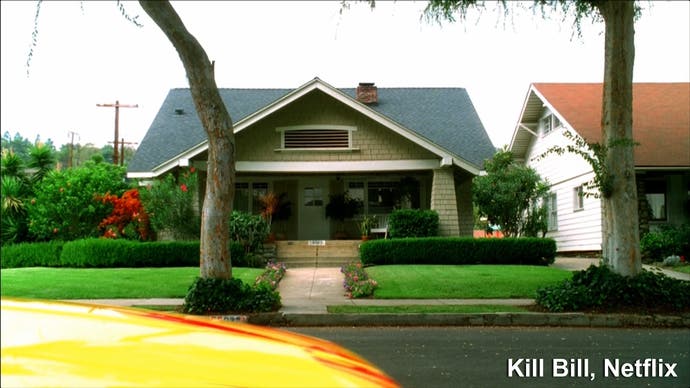
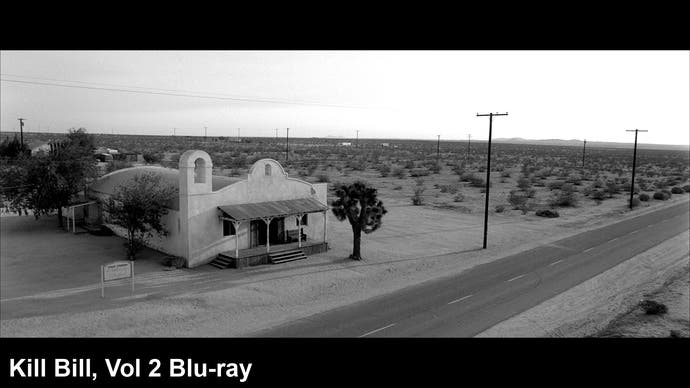

Netflix vs. Lovefilm: the Digital Foundry verdict
While streaming services like Netflix and Lovefilm can't replace Blu-ray as the definitive way to watch your favourite movies and TV shows, they do provide a convenient alternative without sacrificing too much in terms of sound and picture quality. In fact, both of these elements are not far off broadcast-standard HD video, with 1080p content looking both sharp and mostly free of highly noticeable artifacts.
If you're looking to catch up on films and TV shows you might have missed but don't want to clutter up your Blu-ray library with stuff that you might only watch once, both services deliver decent on-demand viewing, with Lovefilm also providing a disc-based accompaniment for those wanting the highest-possible quality available. That said, on a more global level, it's clear that Netflix delivers the best overall experience in terms of both picture and sound quality across a range of formats, though we do appreciate the more faithful gamma set-up and colour reproduction offered by Lovefilm. Unfortunately, the quality of Lovefilm varies greatly between platforms, with the PS3 getting a sub-standard experience.
Ultimately the key deciding factor comes down to content, and in this regard Netflix delivers by far the best service - if you're prepared to pay for access to the international libraries. While UK content is lacking, taking advantage of the overseas servers gives you access to a far bigger range of more up-to-date TV shows and movies, with brand new series that are yet to be broadcast on these shores. Compared to Lovefilm you have a much better chance of discovering new and forgotten content on NetFlix through the service's recommendation system, which offers up new choices based on what you have watched - a genuinely useful feature.
In terms of the best console hardware for streaming video playback, the 360 delivers the best balance between picture quality and sound. The upscaled 720p presentation still uses the same high-quality 1080p video encodes that are available on the Wii U and PS3, and the audio seems crisper and clearer than on Sony's system. However, if you're looking for the absolute best picture quality available, native 1080p does help and that rules out the Microsoft console. Wii U is potentially the most user-friendly piece of client hardware owing to its low power consumption, tablet integration and 1080p support for both streaming services, but it's let down a touch by the platform's limited-range RGB issues and lack of separate surround sound output. However, it is an excellent choice if you're a Lovefilm subscriber as it's the only console client to support native 1080p. This leaves PlayStation 3 as the platform of choice for Netflix - 1080p video streams are rendered on-screen at full res, and they're joined by decent 5.1 surround sound accessible via HDMI or Toslink.
